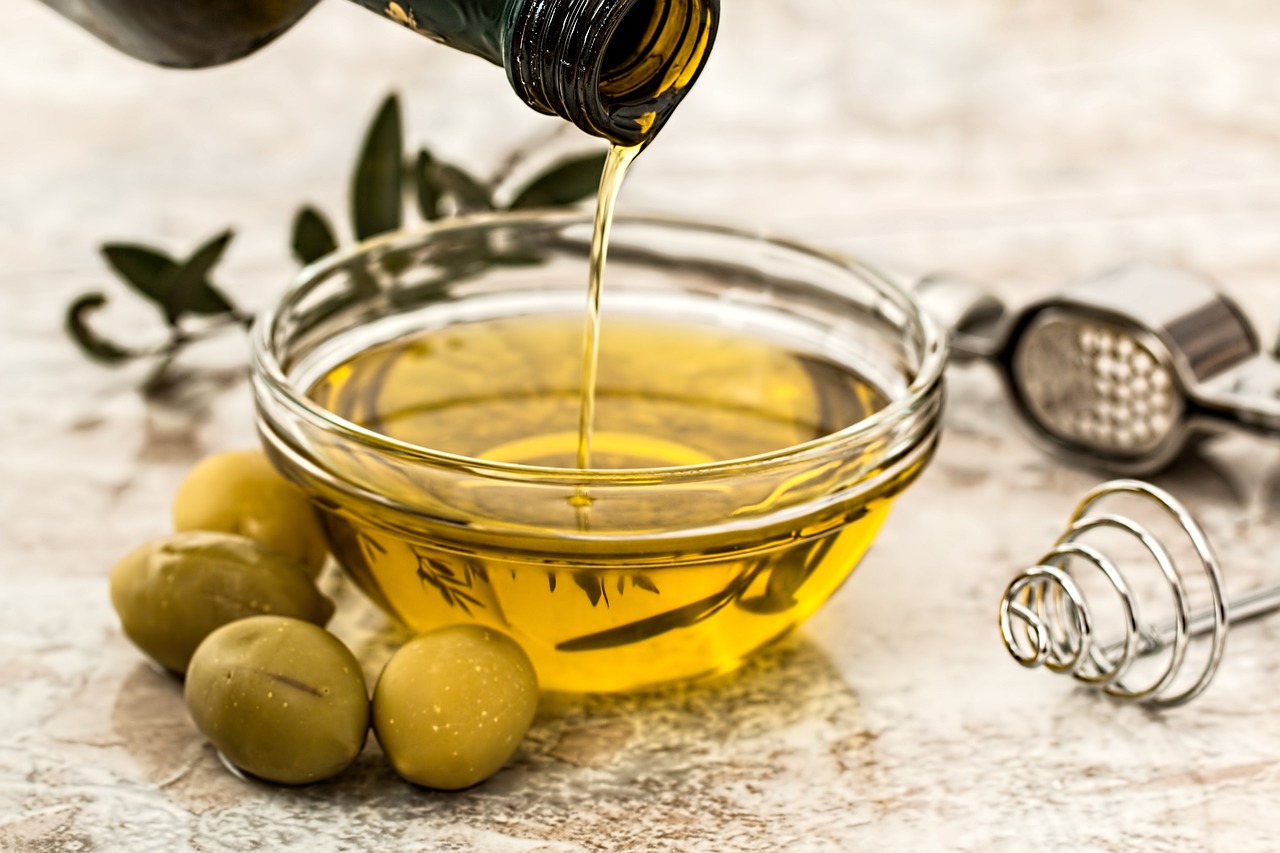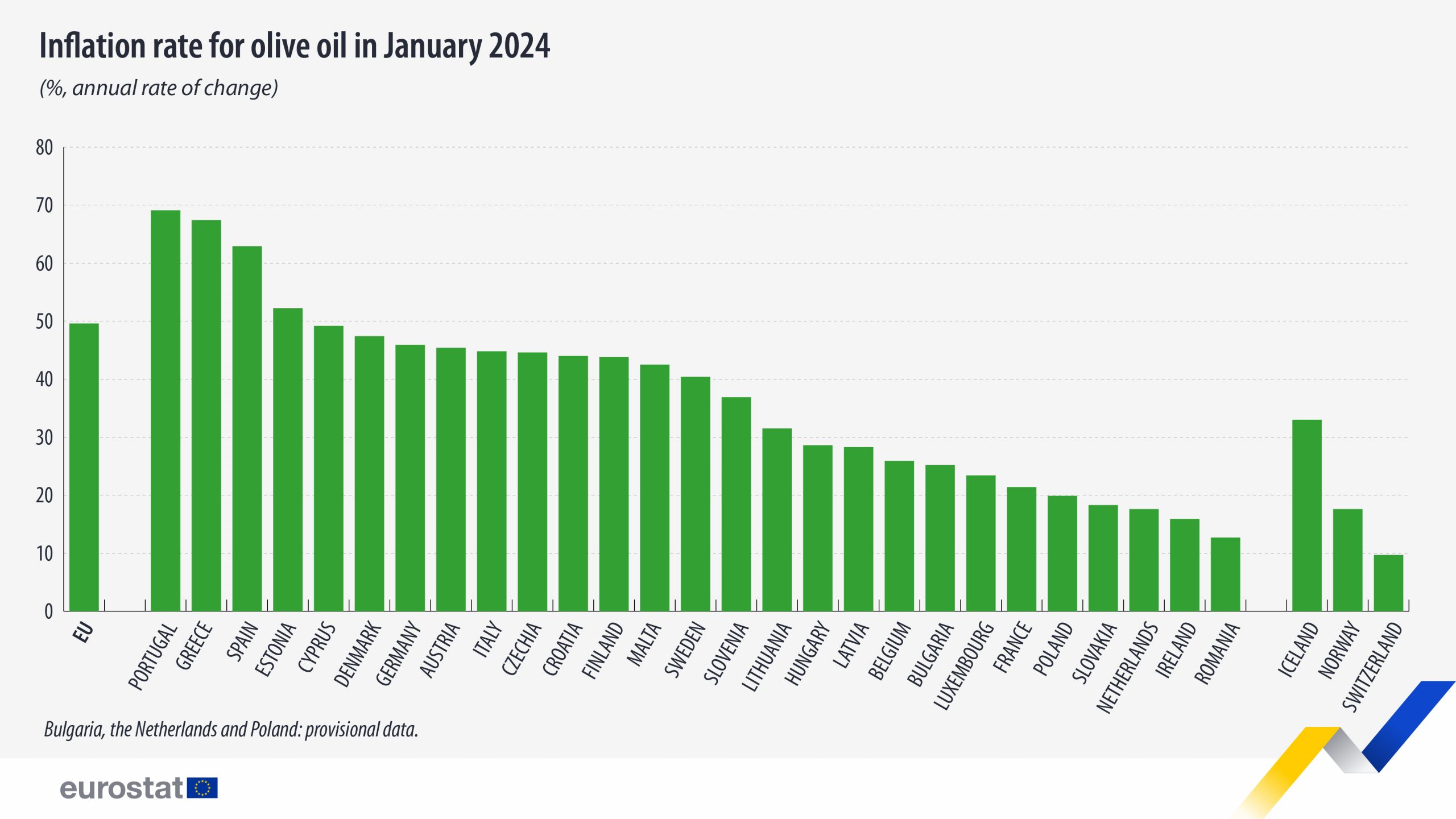Field-to-shelf olive oil prices remain high, with the European market navigating uncharted waters and analysts still unable to determine when the de-escalation will begin. Indicative of the situation is that the biggest price increases are recorded in three of the leading olive oil producers in the European Union, with our country in second place. Also, in all countries the “olive oil inflation” is running at double-digit rates.
In particular, according to data published by the European statistical authority, Eurostat, in January 2024, the price of olive oil in the EU was 50% higher than in January 2023.
The price of olive oil soared in the second half of 2023 with a 37% increase in August (compared to August 2022).
This trend accelerated in September (+44%) and October (+50%). The peak annual rate of change occurred in November 2023 (+51% compared to November 2022). December saw a slight slowdown as prices were 47% higher (compared to December 2022).

The protagonists of the increases
According to the individual data published by Eurostat, in January 2024, all EU countries reported an increase in annual olive oil inflation.
The highest increase was recorded in Portugal (+69% compared to January 2023), followed by Greece (+67%) and Spain (+63%).
Conversely, the smallest price increases were recorded in Romania (+13%), Ireland (+16%) and the Netherlands (+18%).

The market
The market momentum from late 2023 continues into early 2024, resulting in high prices for both refined and extra virgin olive oils.
The olive oil industry is facing unprecedented challenges from the production stage with reduced harvests in the main producing countries (Greece, Spain and Italy), soaring prices, ominous forecasts for shortages and an estimated decline in consumption.
Prices remain high due to persistent demand from export markets, even in the face of a slight decline in local consumption.
Problems in production
According to the latest data (February 15, 2024) from the Commission, processed by OT, the production in Greece from October 2023 to January 2024 rose for the 2023/24 season to 131,500 tons, while it is estimated that the final quantities will rise to 155,000 tons. From these quantities, consumption is expected to reach 95,000 tons, while the final olive oil reserves are estimated at 1,720 tons.
Accordingly, olive oil production in Italy seems to be slightly above the initial estimates, which from the beginning of the season until the January harvest, amounts to 774,653 tons, while it is estimated that the final quantities will reach 800,000 tons. Consumption is expected to reach 369,495 tonnes, with ending stocks reaching 233,511 tonnes.
Due to poor harvests in Spain and Greece, Italy is expected to produce a third of Europe’s olive oil this year.
Production in Italy so far amounts to 315,995 tonnes, while final production is expected to reach 324,000 tonnes in the 2023/24 crop year. In terms of consumption, it is estimated that they will reach 470,000 tons, while stocks will range at 140,000 tons.
It should be noted that the total European production until January is 1,379,063 tons, while the final quantities to be produced are estimated to reach 1,442,500 tons. The resulting reserves are estimated to reach 376,431 tons.
Challenges
It is noted that farmers and olive mills around the world of olive oil production were faced with one of the most difficult harvests in recent memory.
Bad weather and frosts at the end of March caused a lot of damage to the olive blossoms and subsequently to the production.
In Oliveoiltimes.com’s annual survey, sent to 4,487 producers in 34 countries, respondents gave the 2023 harvest an overall score of 51 out of 100, the lowest score since 2018.
Farmers and olive mills were most disappointed with their performance, rating it just 46 out of 100, while for the quality of their production they gave it the lowest score (72/100) since the start of the survey.
The disappointment over yields underscored the widely publicized decline in global olive oil production, which is expected to fall to 2.407 million tonnes in the 2023/24 crop year, the second straight decline and the lowest total since 2013/14.
Survey participants cited climate change, a lack of consumer knowledge and labor difficulties among their biggest concerns, echoing the factors they said most affected the harvest, such as high production costs, extreme temperatures and drought.
Producers believe that olive oil stakeholders should focus on enforcing standards to reduce fraud, lobbying governments for increased support by sector and global marketing campaigns to promote olive oil consumption.
#Olive #oil #Galloping #prices #Greece #Eurostat #data


